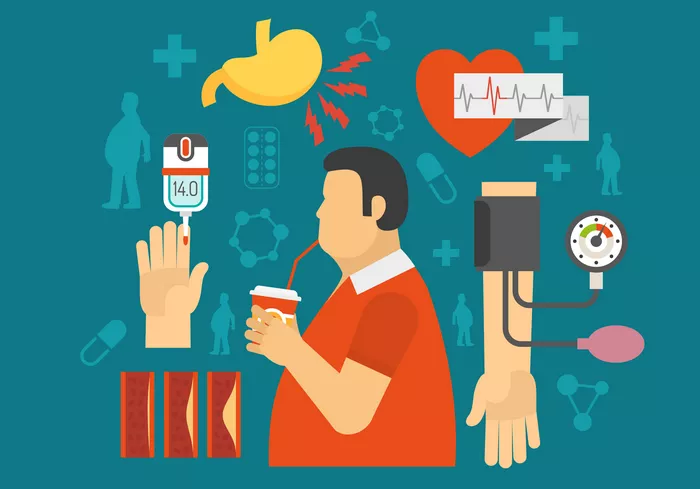Sudden high blood sugar, also known as hyperglycemia, is a common concern for individuals with diabetes, particularly type 2 diabetes. Recognizing the symptoms early is crucial for preventing complications and managing the condition effectively. This article will explore the causes, symptoms, and management strategies for sudden high blood sugar, helping individuals better understand and control their diabetes.
Understanding Hyperglycemia
What is Hyperglycemia?
Hyperglycemia occurs when there is too much glucose in the blood. This condition can arise from various factors, including insufficient insulin production, insulin resistance, dietary choices, and other health conditions. For individuals with type 2 diabetes, hyperglycemia is often a result of the body’s inability to use insulin effectively.
Causes of Sudden High Blood Sugar
Several factors can contribute to a rapid increase in blood sugar levels, including:
Diet: Consuming a large amount of carbohydrates, especially simple sugars, can spike blood glucose levels.
Stress: Physical or emotional stress can cause the body to release hormones that increase blood sugar.
Illness or Infection: The body’s response to illness or infection can raise blood sugar levels.
Medications: Certain medications, including steroids, can elevate blood sugar.
Lack of Exercise: Physical inactivity can lead to higher blood glucose levels as the body becomes less efficient at using insulin.
Primary Symptoms of Sudden High Blood Sugar
Frequent Urination (Polyuria)
One of the most common symptoms of sudden high blood sugar is frequent urination. When blood glucose levels are elevated, the kidneys work harder to filter and remove the excess glucose from the blood, resulting in increased urine production.
Excessive Thirst (Polydipsia)
Along with frequent urination, individuals may experience excessive thirst. The body loses more fluids through urination, leading to dehydration and a subsequent increase in thirst.
Blurred Vision
High blood sugar levels can cause the lenses in the eyes to swell, leading to blurred vision. This symptom can develop rapidly and may fluctuate as blood sugar levels change.
Fatigue
Hyperglycemia can lead to feelings of extreme tiredness or fatigue. When cells cannot effectively utilize glucose for energy, the body feels depleted, even after adequate rest.
Secondary Symptoms of Sudden High Blood Sugar
Dry Mouth and Skin
High blood sugar can lead to dehydration, causing symptoms such as dry mouth and dry, itchy skin. This occurs because the body is using and losing more fluids than usual.
Recurrent Infections
Elevated blood glucose levels can impair the immune system, making the body more susceptible to infections. Common infections include urinary tract infections, yeast infections, and skin infections.
Slow-Healing Wounds
High blood sugar can affect circulation and nerve function, leading to slower healing of cuts, bruises, and other wounds. This can increase the risk of complications from even minor injuries.
Unexplained Weight Loss
In some cases, particularly when blood sugar levels remain high for an extended period, individuals may experience unexplained weight loss. This occurs because the body starts to break down muscle and fat for energy when it cannot use glucose effectively.
Nausea and Vomiting
Hyperglycemia can cause gastrointestinal symptoms such as nausea and vomiting. These symptoms can be particularly severe in cases of diabetic ketoacidosis (DKA), a serious complication of uncontrolled diabetes.
Complications of Prolonged Hyperglycemia
Diabetic Ketoacidosis (DKA)
Although more common in type 1 diabetes, DKA can occur in type 2 diabetes, especially during periods of severe illness or stress. Symptoms include high blood sugar levels, ketones in the urine, abdominal pain, nausea, vomiting, and confusion. DKA is a medical emergency that requires immediate treatment.
Hyperosmolar Hyperglycemic State (HHS)
HHS is a serious complication of type 2 diabetes characterized by extremely high blood sugar levels, severe dehydration, and altered consciousness. Symptoms include extreme thirst, dry mouth, warm and dry skin, high fever, drowsiness, confusion, and even coma. HHS also requires emergency medical attention.
Managing Sudden High Blood Sugar
Immediate Actions
When experiencing symptoms of sudden high blood sugar, it is important to take immediate action to lower blood glucose levels:
Check Blood Sugar Levels: Use a glucose meter to determine your blood sugar level.
Hydrate: Drink plenty of water to help flush excess glucose from your system.
Take Medication: Follow your healthcare provider’s instructions for taking insulin or other medications.
Exercise: Engage in moderate physical activity, such as walking, to help lower blood sugar levels (unless contraindicated).
Long-Term Management
Preventing sudden spikes in blood sugar involves consistent management and lifestyle adjustments:
Diet: Follow a balanced diet that focuses on complex carbohydrates, fiber, lean proteins, and healthy fats. Monitor carbohydrate intake and avoid high-sugar foods and beverages.
Medication Adherence: Take your prescribed medications consistently and as directed by your healthcare provider.
Regular Monitoring: Check blood sugar levels regularly to track trends and make necessary adjustments to your treatment plan.
Physical Activity: Engage in regular physical activity to improve insulin sensitivity and help maintain stable blood sugar levels.
Stress Management: Practice stress-reducing techniques such as meditation, deep breathing exercises, or yoga.
When to Seek Medical Help
Emergency Situations
Seek immediate medical attention if you experience symptoms of diabetic ketoacidosis or hyperosmolar hyperglycemic state, such as severe abdominal pain, nausea, vomiting, difficulty breathing, extreme thirst, confusion, or unconsciousness.
Routine Consultation
Regular follow-ups with your healthcare provider are essential for managing type 2 diabetes. Discuss any unusual symptoms, changes in blood sugar levels, or difficulties in adhering to your treatment plan.
Preventive Strategies
Education and Awareness
Understanding the causes and symptoms of hyperglycemia is the first step in prevention. Educate yourself about the condition and stay informed about new research and treatment options.
Healthy Lifestyle Choices
Adopting a healthy lifestyle can significantly reduce the risk of sudden high blood sugar:
Balanced Diet: Focus on whole foods, limit processed foods, and be mindful of portion sizes.
Regular Exercise: Aim for at least 150 minutes of moderate-intensity exercise per week.
Adequate Sleep: Ensure you get 7-9 hours of quality sleep each night.
Avoid Smoking and Limit Alcohol: These can affect blood sugar levels and overall health.
See also: What Is a Healthy Cereal for Diabetics?
Conclusion
Sudden high blood sugar, or hyperglycemia, is a significant concern for individuals with type 2 diabetes. Recognizing the symptoms early and taking immediate action can prevent severe complications and improve diabetes management. By understanding the causes, primary and secondary symptoms, and effective management strategies, individuals with diabetes can lead healthier, more stable lives. Regular consultation with healthcare providers and adherence to a comprehensive diabetes care plan are essential for preventing and managing hyperglycemia.
Related topics:



























